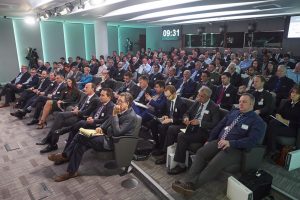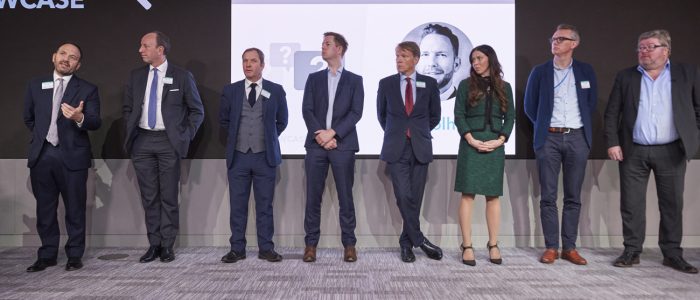After a raft of rule changes from the Patient Capital Review and Philip Hammond’s 2017 Budget, the EIS landscape became somewhat unrecognisable.
At Intelligent Partnership’s London EIS Showcase, investment managers discussed how they were investing in growth capital via EIS.
The event, which took place at the London Stock Exchange on 22 November, allowed a discerning audience of financial advisers to understand what investment providers are offering in the new EIS marketplace.
Shift to alpha
Now that capital preservation strategies are no longer permitted, EIS portfolios have to purely focus on growth.
Kealan Doyle, CEO at Symvan Capital, said:
“The landscape has shifted to generating alpha in your portfolio, rather than for the tax relief.”
Symvan focuses its EIS investment purely on tech, Doyle added:
“You can get extraordinary returns on tech. We’d only invest in something that could achieve 10x return.”
Mark Pearson, Managing Partner at Fuel Ventures, echoed Doyle and said that his firm was targeting investments with a minimum of 10x return, with a potential for up to 100x.
Pearson added that he sees the seed stage of investment as a “big de-risking step”.
Tom Bradley, CEO at Oxford Capital, also said that the seed stage was a top priority:
“Typically we invest at seed or series A stage. We back founders and teams first and foremost. We love businesses with a really strong sense of the why, and are also data focused.”
In contrast, Steve Harris, CEO at Committed Capital, said:
“We don’t like early-stage investments. We’re a growth investor.”
Backing innovative firms

The underlying sectors that EIS managers are investing in was a hot topic at the showcase.
Louise Farley, Partner at Deepbridge Capital, said that her firm has two EIS offers focusing on tech and life sciences investments. She warned that investors should be in it for the long-term:
“With anything medical, you’re looking at a five year investment. However, we deploy capital monthly, which is a huge advantage.”
Matt Dickens, Investment Director at Ingenious, talked about his firm’s focus on media-based investments such as UK film and video games. He said:
“There was $116bn of spending on global gaming in 2017, which is anticipated to grow by 8.2%pa. Some of the most iconic games were born in the UK, such as Grand Theft Auto.”
David Craven, Managing Director at Blackfinch Ventures, said that there was currently too much focus on investment in certain areas of the UK:
“There’s a complacency in London. Everyone is seeing the same deals from London, Oxford and Cambridge.”
The fees debate
One of the points of contention among the EIS investment managers was how fees are charged. Some of the EIS managers levy charges on the investor, whilst others apply charges to the investee company.
There are, of course, pros and cons to both approaches, and charging fees to the investee company does not mean that investors are free from charges affecting their returns. If investee companies take on the full burden of fees, then this could be to the detriment of their growth potential.
James Faulkner, Director at Vala Capital, said that his firm charges a one off fee of 6% to the investee company, but after that point, no other fees are applied. Faulkner claimed that this resulted in Vala’s fee structure being the “lightest in the market”.
Learn more about the EIS market
 To learn more about the current EIS landscape, read our latest report – EIS Industry Report 2018/19.
To learn more about the current EIS landscape, read our latest report – EIS Industry Report 2018/19.
The report gives an up-to-date analysis of how the EIS market has changed since the Patient Capital Review, and Philip Hammond’s two most recent Autumn Budgets.
Readers are eligible for up to four hours of CPD upon completion of the report.
Download a free copy of the report here.
